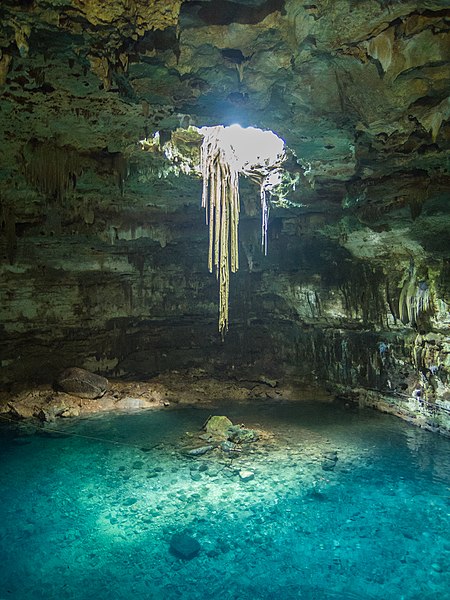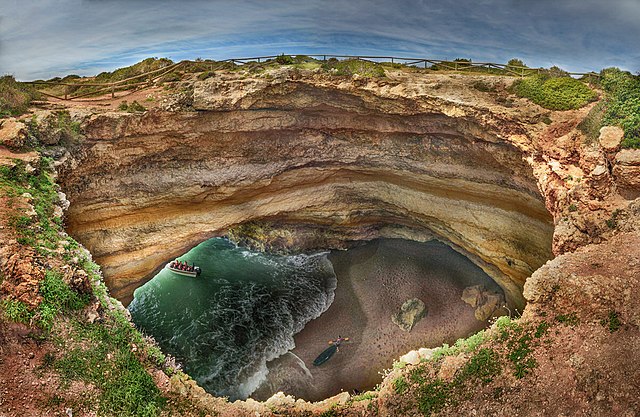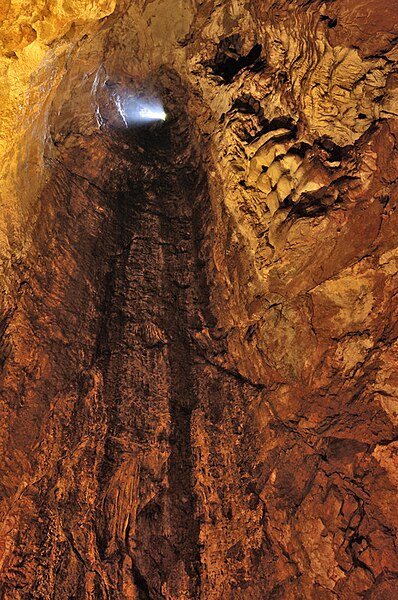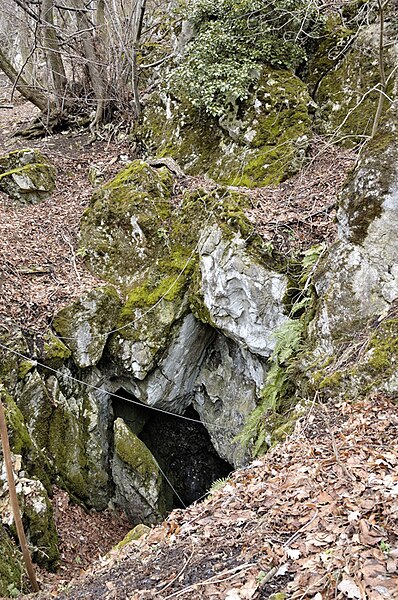A cenote is a natural pit, or sinkhole, resulting when a collapse of limestone bedrock exposes groundwater. The term originated on the Yucatán Peninsula of Mexico, where the ancient Maya commonly used cenotes for water supplies, and occasionally for sacrificial offerings. The name derives from a word used by the lowland Yucatec Maya—tsʼonoʼot—to refer to any location with accessible groundwater.
The cenote at Hubiku, Yucatan
The Sacred Cenote at Chichen Itza, Mexico
The Samulá Cenote in Valladolid, Yucatán, Mexico
Cenote at Bolonchén, Mexico, used as a source of water, painting of 1842 by Frederick Catherwood
A pit cave, shaft cave or vertical cave—or often simply called a pit and pothole or pot ; jama in Slavic languages scientific and colloquial vocabulary —is a type of cave which contains one or more significant vertical shafts rather than being predominantly a conventional horizontal cave passage. Pits typically form in limestone as a result of long-term erosion by water. They can be open to the surface or found deep within horizontal caves. Among cavers, a pit is a vertical drop of any depth that cannot be negotiated safely without the use of ropes or ladders.
Benagil pit cave near Marinha Beach in Lagoa, Portugal
Pit cave Haviareň, Little Carpathians
Fluted pothole, England
Pit cave PP2, Slovakia








